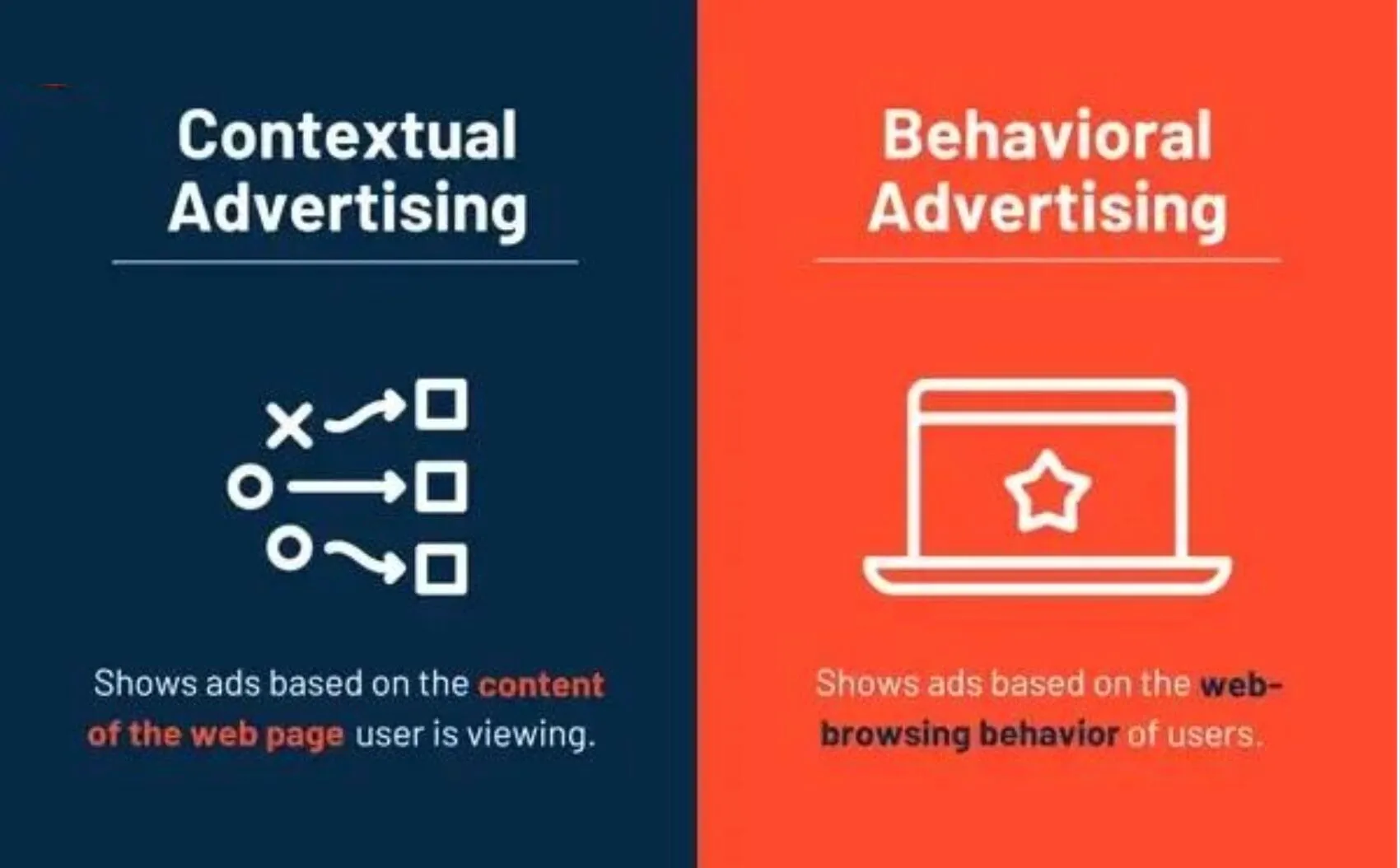In perhaps the most devastating break-up of the 2020s, the internet is calling it quits with third-party cookies. And the kids aren’t alright: as privacy concerns take center stage and data collection becomes increasingly unreliable, driving meaningful action through traditional advertising methods is coming under significant strain.
The landscape of online marketing is shifting rapidly, and we’re navigating tricky terrain - in fact, only 20% of marketers feel unprepared for a cookie-less environment. But as third-party cookies crumble, contextual advertising has risen from its ashes, offering a powerful way to deliver targeted and timely messaging to both patients and healthcare professionals.
For pharmaceutical companies, healthcare providers and wellness brands, this is a big deal: contextual advertising reaches audiences by targeting them with highly relevant ads that closely align with their current needs - which could be the key to unlocking those all-important conversions.
As the healthcare industry strives to connect with patients in a more effective and ethical way, this approach offers a solution that promises to enhance engagement, build trust and ultimately improve patient outcomes.
Could this be the answer to future-proofing our ad strategies? Let’s walk you through it.
First things first: What are third-party cookies?
Unless you’ve been living under a rock with no WIFI for the last 30 years, you’re probably aware of the concept of cookies.
Lou Montulli was just 23 when he invented cookies in 1994, pitched as a tool to help websites remember users. It took just a year for his fellow engineers to realise they could exploit these data trackers and follow users as they traversed the web, taking note of their browsing habits.
This is essentially how third-party cookies still function today (with added GDPR, of course). By hiding in the bushes of our browsers and collecting data about how we surf the net, marketing teams can create ads that speak to our interests and attempt to provide us with exactly what we’re after.
So why are third-party cookies being phased out?
The thing is, third-party cookies are not actually a very effective way for digital advertisers to track potential customers, and their use can be a little… murky.
In more recent years, the criticism that surrounds the privacy implications of having our every move tracked online has become louder, and more clarity and control has been demanded for web users over how their data is being used.
So, the landscape of online privacy has changed a lot since Montulli first solved that pressing problem of the early web, and regulators have been struggling to tame it for quite some time. The answer? Privacy laws that protect users and their data.
And of course when it comes to healthcare marketing and its personal nature, the laws become particularly stringent. Healthcare advertisers must tread a careful line set by regulatory bodies like ASA, GMC, BMA, and various advertising platforms. This turns retargeting into a fine (if not slightly ineffectual) art, ensuring that ads are both engaging and nonspecific (no personal medical details, please), to appease the likes of Facebook and Google.
Many browsers, like Safari and Firefox, have already taken the step to block third-party cookies. Google, however, can’t quite sign those divorce papers. After much back and forth, Chrome has decided to keep cookies, but has said there will be ‘privacy-preserving alternatives’ (the Sandbox) available that lets users make more informed choices. But regulators are still skeptical, and the majority of marketers have concerns about its viability.
Contextual vs behavioural advertising: what’s the difference?
While some are worried about what a cookie-less future could look like, many are confident contextual AI could fill the advertising-shaped hole that third-party cookies leaves behind.

Let’s think about this in a healthcare setting.
With third party cookies, when a user visits a health information site to read about migraines, the cookies embed themselves into the user’s browser. Now a healthcare organisation can track their behaviour across multiple sites, building a profile from the pages they view, their time on site, and certain keywords.
But as the user continues to browse the web, they head to some news outlets or a social media site, which are included in the profile too. So when this user starts getting ads from the healthcare brand (also known as retargeting), they appear on unrelated sites - like while the user is checking the weather, for example. Right content, wrong place.
On the flip side, with contextual advertising, a user could be reading an article titled ‘Top Tips for Relieving Migraines’, and instead, only the content of this page is analysed. It looks at the overall topic, performance metrics, and the keywords in the article to display ads, right there and then.
Instead of tracking the user across the web and building a profile, this ad has been served based solely on the content of that particular page, making it highly relevant to what they’re interested in at that moment. It’s connecting them with a healthcare solution that’s relevant to their current concerns at a time when they’re most engaged, leading to a higher chance of conversion. Right content, right place.
More ethically sound than traditional methods, contextual advertising doesn’t need to know who you are to give you what you want. This essentially provides a more privacy-friendly experience, which is crucial in healthcare marketing where sensitive information is often involved.
How will the healthcare industry benefit from contextual advertising?
It’s safe to say contextual AI is about to become big business. Between 2022 and 2030, contextual advertising spend is expected to grow by 13.8% annually - and demand for the tech is high. We’ve talked before on this blog about the importance of personalised advertising - and as we surge into a cookie-less future, healthcare businesses must adapt in order to survive.
Luckily, contextual AI provides myriad benefits to our ad strategies:
Improved patient engagement: By understanding the context of a patient’s online activity, contextual advertising can help healthcare providers reach patients with relevant content that aligns with their current concerns or research. For instance, if a patient is reading about a specific condition, contextual ads can suggest related treatments, clinical trials, or educational resources, leading to better-informed patients and improved health outcomes.
A recent study found that engagement with contextual ads show promise, too: 69% of consumers said they were more likely to look at an ad if it was relevant to what they were reading, and 44% have tried a new brand after seeing a relevant ad alongside a piece of content they were consuming.
More accurate insights: One of the most revolutionary things about AI is its potential for improving ad accuracy through analysis and trend recognition. Companies can dissect huge swathes of data to determine what ads will yield the best results. We’re talking real-time analytics that scrutinise markers like click-through rate or placement on the page, to improve the precision of your targeting.
Unlike traditional retargeting which focuses on the individual user behaviour, contextual AI’s data pool is far deeper, meaning you can really dive into broader trends across different demographics and content types, making the ads more effective to the right audiences. Essentially, a larger dataset ensures more relevant and specific targeting.
Targeting based on health-related trends: Contextual AI can identify and react to emerging health trends, such as seasonal illnesses or public health campaigns. Advertisers that use this information to tailor their messaging and offer relevant solutions, such as flu vaccines during flu season.
Brand safety and compliance: In a highly regulated industry like pharmaceuticals, it’s crucial that ads appear in appropriate and compliant environments. Contextual AI ensures that ads are shown alongside content that is relevant and safe, reducing the risk of non-compliance or damaging brand reputation.
Adaptability to emerging trends: The life sciences industry is a dynamic one, with new research, treatments, and health trends emerging constantly. Contextual advertising can quickly adapt to these changes, allowing companies to stay relevant and responsive. If a new study on diabetes is published, for example, a company can target ads for their latest diabetes management product alongside that content.
Should we be nervous or excited about a cookie-less world?
Excited! While the move from cookies and its ensuing strategic pivot seems daunting, as shown above, there are big gains to be made in embracing contextual advertising. The potential is expansive.
With this new way of advertising, the focus is on the environment of your ads, rather than attempting to extrapolate broad, potentially inaccurate audience data and creating weaker campaigns. This means your advertising becomes more resilient and sustainable - and before you know it, you’ve future-proofed your business for a privacy-led environment.
Looking for support with your paid ad strategy? Get in touch with our healthcare marketing experts to see how they can help.
